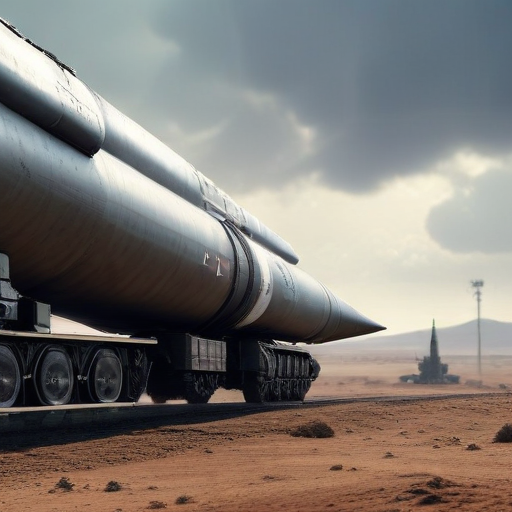The Kremlin has recently launched a new intermediate-range ballistic missile, named Oreshnik, aimed at Ukraine. This move comes as a direct response to Ukraine’s use of American and British missiles that can strike deeper into Russian territory. In a televised address, President Vladimir Putin emphasized that this missile, capable of flying at ten times the speed of sound, could target any country aiding Ukraine in its military efforts against Russia.
Putin defended Russia’s right to respond militarily against nations permitting their weapons to be used against Russian targets, following the recent approval by President Joe Biden for Ukraine to use U.S. ATACMS missiles. The Pentagon confirmed the missile’s deployment as a novel addition to their arsenal, indicating concern over its potential to carry both conventional and nuclear warheads.
The missile strike affected an industrial facility in Dnipro, which Putin noted could serve as a warning for future strikes, allowing civilians the chance to evacuate—an approach Russia has not previously taken. Initial claims from Ukraine suggested that an intercontinental ballistic missile was used, though U.S. assessments indicated it was, in fact, the new intermediate-range missile.
Ukrainian President Volodymyr Zelenskyy condemned the missile’s use, calling it a serious escalation and a violation of international norms. He voiced frustration over the lack of a strong global reaction, asserting that such actions might embolden Russia to continue its aggression.
Military experts highlight that intermediate-range ballistic missiles (IRBMs) are prone to remain undetected and can carry multiple warheads, signaling both a threat to Ukraine and a message to Western nations regarding the continued risk of escalation. Despite concerns about these weapons, there is skepticism among experts about the operational efficiency of Russian technology.
The ongoing conflict, which has now persisted for over 1,000 days, has shifted dynamics following the easing of restrictions on Ukraine’s use of Western missile capabilities, potentially placing the Russian army in a more vulnerable situation. Analysts point out that while these changes may not drastically alter the course of the war, they complicate Russian military logistics and highlight an ongoing dialogue about deterrence in the region.
This critical moment in the war underlines the risks and uncertainties surrounding military engagements, and it serves as a vivid reminder of the global ramifications tied to these developments. As the situation evolves, continued diplomatic engagement and collective international response could help manage tensions and foster a more secure future for the region.
Summary: The Kremlin’s launch of the Oreshnik missile against Ukraine marks a significant escalation in the Russia-Ukraine conflict. This response follows Ukraine’s use of advanced missiles from the U.S. and the U.K. as tensions rise. President Putin’s announcement stresses the potential for future strikes, while Ukraine’s leaders call for global solidarity against such aggression. Experts express concerns about the implications of this new missile designation and its impact on military strategies in the ongoing war.
